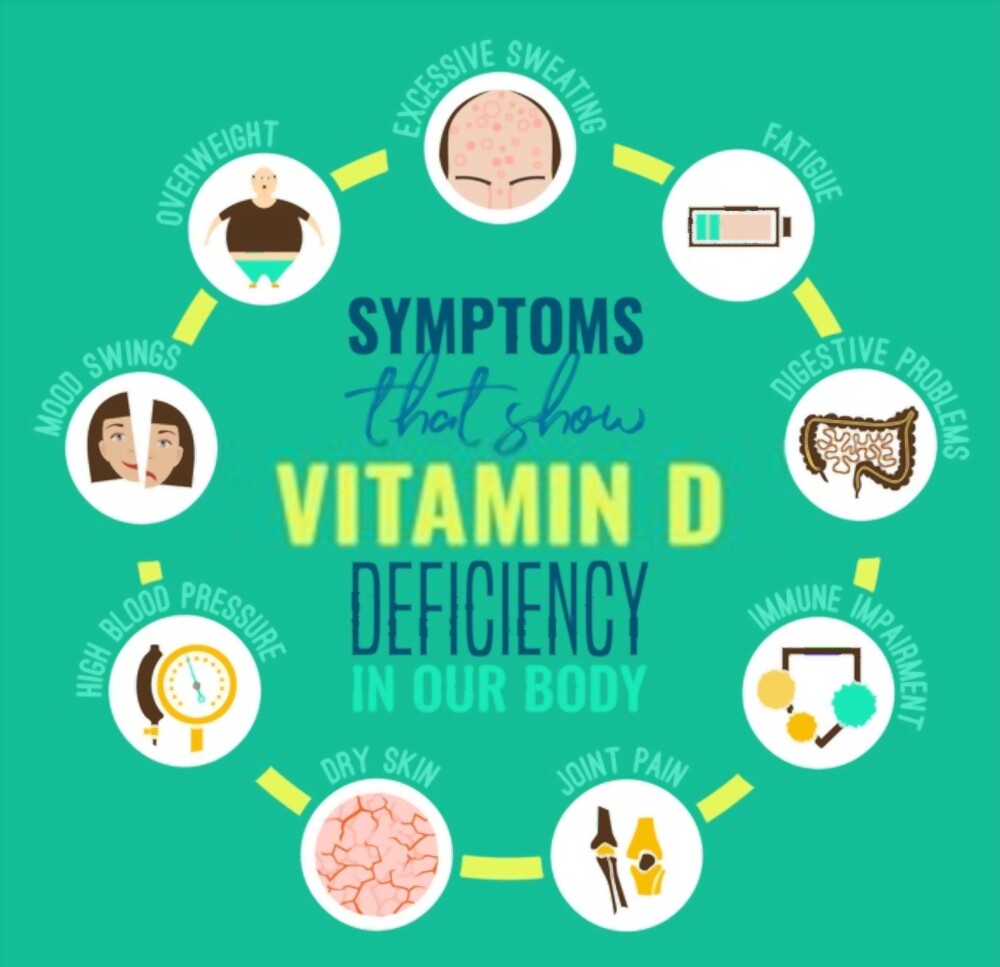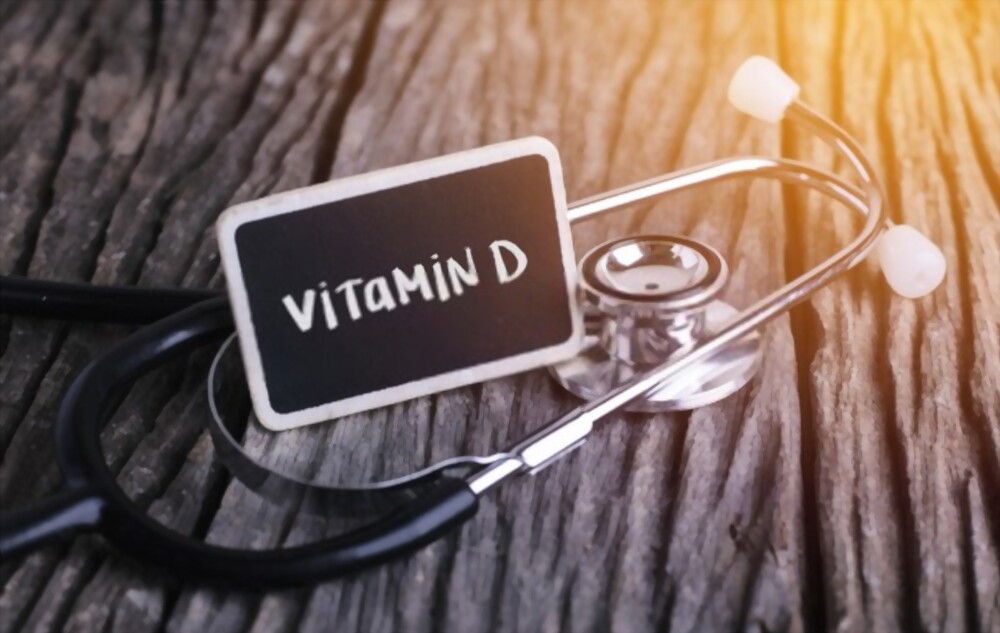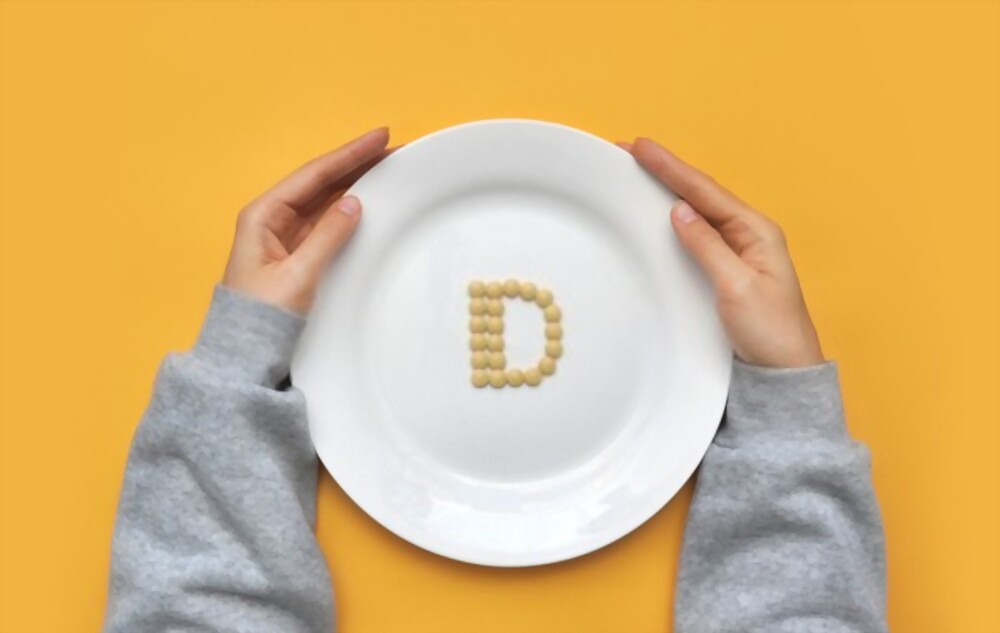In response to sun exposure, the human body produces vitamin D. A person can also increase their vitamin D intake by eating certain foods or taking supplements.
Vitamin D is necessary for a variety of reasons, including bone and tooth health. It may also offer protection against a variety of diseases and conditions, including type 1 diabetes.

Despite its name, vitamin D is not a vitamin, but rather a prohormone, or a hormone precursor.
Vitamins are nutrients that the body cannot produce, so they must be obtained through diet. The body, on the other hand, can produce vitamin D.
In this article, we’ll look at the benefits of vitamin D, what happens to the body when people don’t get enough, and how to get more of it.
What exactly is vitamin D deficiency?
Vitamin D deficiency refers to a lack of vitamin D in your body. Vitamin D is unique in that it is produced by your skin through exposure to sunlight. Individuals with fair skin and those under the age of 50 convert sunlight into vitamin D far more efficiently than those with darker skin and those over the age of 50.
What is the significance of vitamin D?
Vitamin D is one of many vitamins that our bodies require to function properly. This vitamin serves a variety of purposes, including:
Maintaining bone strength:
Healthy bones protect you from a variety of conditions, including rickets. Rickets is a bone disorder that causes children’s bones to be weak and soft. It is caused by a deficiency in vitamin D in the body. Vitamin D is required for calcium and phosphorus to be used in bone formation. Adults with soft bones have a condition known as osteomalacia.
Calcium absorption:
Vitamin D, along with calcium, aids in the formation of bones and the maintenance of bone strength and health. Weak bones can lead to osteoporosis, which is characterized by a loss of bone density and can result in fractures. Vitamin D is converted to an active form after being consumed orally or through sun exposure. It is the active form that promotes optimal calcium absorption from your diet.
Getting to know the parathyroid glands:
The parathyroid glands communicate with the kidneys, gut, and skeleton to balance the calcium in the blood on a minute-by-minute basis. When there is enough calcium in the diet and enough active Vitamin D, dietary calcium is absorbed and used effectively throughout the body. When calcium intake is insufficient or vitamin D levels are low, the parathyroid glands will ‘borrow’ calcium from the skeleton to keep blood calcium levels in the normal range.
Vitamin D deficiency symptoms may include

-consistent illness or infection
-tiredness
-bone and back pain
-low mood
-wound healing impairment
-hair thinning
-muscle pain
If vitamin D deficiency persists for an extended period of time, it can lead to complications such as:
-cardiovascular disease
-autoimmune issues
-neurological conditions
-infections
-complications during pregnancy
-certain cancers, particularly breast, prostate, and colon cancers
Causes
1.Type of skin:
Darker skin, as well as sunscreen, reduces the body’s ability to absorb ultraviolet B (UVB) rays from the sun. Sunlight absorption is required for the skin to produce vitamin D.
2. Sunscreen:
A sunscreen with an SPF of 30 or higher can reduce the body’s ability to synthesize the vitamin by 95%. Clothing that covers the skin can also inhibit vitamin D production.
3. Geographical area:
People who live in northern latitudes or high-pollution areas, work night shifts, or are homebound should try to get their vitamin D from food sources as much as possible.
4. Breastfeeding:
Infants who are exclusively breastfed require a vitamin D supplement, especially if they have dark skin or get a little sun.
Although vitamin D supplements are available, it is preferable to obtain vitamins and minerals from natural sources whenever possible.
Vitamin D sources

Getting enough sunlight is the most effective way to help the body produce enough vitamin D. Vitamin D-rich foods abound, including:
-fatty fish like salmon, mackerel, and tuna
-yolks of eggs
-cheese
-liver of beef
-mushrooms
Milk that has been fortified
cereals and juices fortified with iron
What are the consequences of a vitamin D deficiency?
Getting enough vitamin D may also help to keep you healthy by protecting against and possibly treating the following conditions. Among these conditions are:
-Heart disease and hypertension.
-Diabetes.
-Infections and immune system malfunctions
-Falls in the elderly.
-Some cancers, such as colon cancer, prostate, and breast cancers.
-Multiple sclerosis.
Vitamin D Deficiency Screening and Diagnosis
A good healthcare provider will examine your potential risk factors as well as your personal health history during vitamin D deficiency screenings.
However, keep in mind that most health insurance companies will not cover a vitamin D blood test unless your doctor documents symptoms or you have a disease that puts you at high risks, such as kidney disease or various bone diseases.
Vitamin D deficiency levels vary but typically range between 12 and 30 ng/mL. A blood level of less than 12 nanograms per millilitre (ng/mL) almost always indicates vitamin D deficiency.
Treatment

Age, UVB exposure, diet, and health status all influence a person’s specific vitamin D requirement.
If a blood test reveals that a person is vitamin D deficient or at risk of becoming deficient, the doctor will most likely advise them to increase their intake.
The ODS recommends Take the following from a reliable source every day:
For children aged 0–12 months, 400 IU (10 micrograms [mcg])
600 IU for children aged 1–70 years (15 mcg)
800 IU for those over the age of 71 (20 mcg)
The amount of vitamin D a person gets from sunlight, on the other hand, is impossible to quantify.
Individuals should speak with their doctor about their vitamin D needs and how to increase their intake.
Prevention
The best ways to avoid vitamin D deficiency are to eat vitamin D-rich foods and spend time outside every day.
The following are some pointers for avoiding a deficiency:
1. Maintaining a healthy body weight:
Walking or cycling can provide exercise as well as exposure to sunlight.
2. Treatment of medical conditions:
People with nutrient-impaired health conditions may find that treating the underlying condition increases their levels of certain nutrients, such as vitamin D.
3. Being proactive about preventive health:
People who have a family history of osteoporosis or vitamin D deficiency may want to discuss screening with their doctor.
Supplements
Some people may require supplements, but it is best to consult with a doctor first because some of them can be harmful. In addition, the doctor will advise you on the proper dosage.
The Risks of Excessive Vitamin D Consumption

Excessive vitamin D consumption can result in bone over calcification as well as hardening of blood vessels, kidneys, lungs, and heart tissues.
The most common symptoms of excess vitamin D are headache and nausea. Too much vitamin D, on the other hand, can cause the following side effects:
-a metallic flavor
-a decrease in appetite
-vomiting
-constipation
-diarrhea
Excess vitamin D is usually the result of taking too many supplements. Getting vitamin D from natural sources is preferable.
If you take supplements, you should be careful about which brand you use because the FDA does not monitor the safety or purity of supplements.
The following are the six most serious side effects of too much vitamin D.
-Raise in blood levels -Raise in blood calcium levels
-Vomiting, nausea, and appetite loss
-Loss of bones
-Kidney disease
-Pain in the stomach, constipation, or diarrhea
What role does your diet play in ensuring adequate vitamin D levels?

Many foods do not contain vitamin D naturally. That is why vitamin D is supplemented in certain foods. In fact, the amount of vitamin D in a specific food item is now indicated on newer food nutrition labels.
Vegans and lactose-intolerant people may struggle to get enough vitamin D from their diets, which is why some people choose to take supplements. Eating a variety of healthy foods from various food groups is always a good idea.
What is the connection between getting enough vitamin D and getting enough sunlight?

The sun has some health benefits. Vitamin D is produced when your skin is exposed to sunlight, specifically the ultraviolet B (UV-B) radiation emitted by the sun. A variety of factors influence the amount of vitamin D produced by your skin, including:
The time of year: This varies according to where you live. UV-B light does not reach the earth for six months of the year in places like Cleveland, OH due to the ozone layer and the sun’s zenith.
The time of day: Between 10 a.m. and 3 p.m., the sun’s rays are at their strongest.
Cloud cover and air pollution levels.
Where do you call home? UV (ultraviolet) light levels are higher in cities near the equator. Sunlight’s UV-B rays cause your skin to produce vitamin D.
Melanin content of your skin: Melanin is a pigment found in the eyes, hair, and skin that is brown-black in color. Melanin is the pigment that causes skin tanning. The more sun exposure you need to get enough vitamin D from the sun, the darker your skin.
Takeaway
Vitamin D is essential for both physical and mental well-being. Vitamin D deficiency can lead to a variety of health problems, including depression.
Getting more sunlight, including vitamin D-rich foods in your diet, maintaining a healthy weight, and taking dietary supplements are some methods for treating depression caused by low vitamin D levels.
Consult with your doctor to determine the best treatment options for you.
Also Read: Vacancy For Jnr. Clinical Dietician In Bengaluru: Apply Here – V Cure (vcurehealthcare.com)





